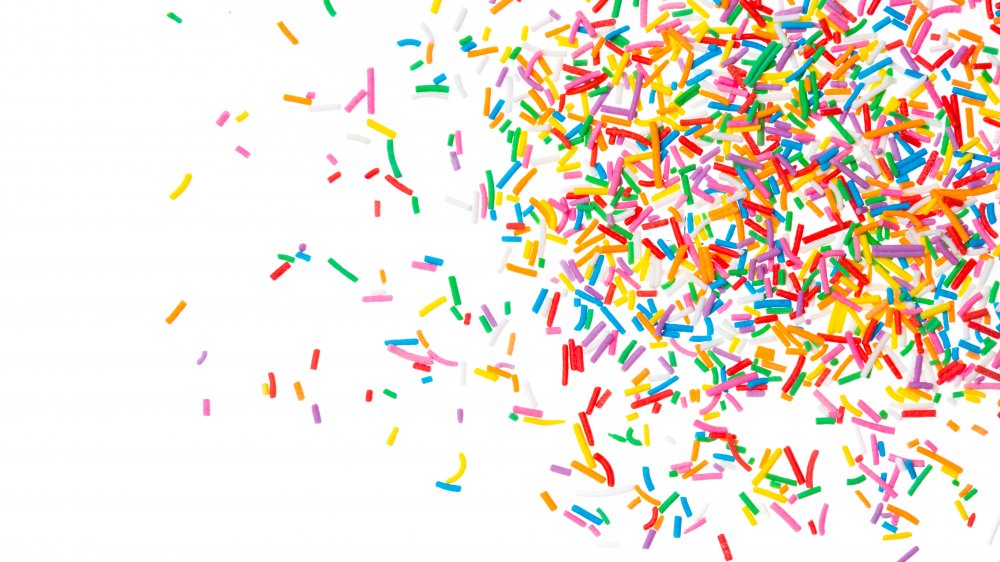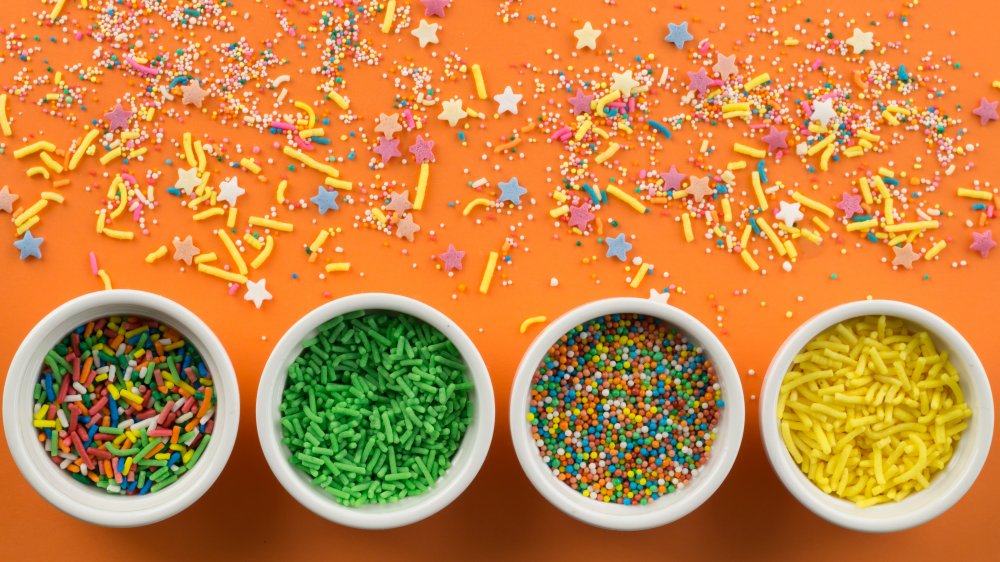This Might Make You Think Twice Before Eating Sprinkles
What is not to like about rainbow sprinkles? They're sweet, they're fun, they make just about everything they hold hands with a celebration. Think ice cream. Cake. Cookies. Even protein bars.
Because candy sprinkles are found in just about every corner of their world, they're also sold under different names. In the UK, they're known as "hundreds and thousands," and in the Netherlands they are called "hagelslag" or hailstorm, where they are used to top buttery slices of toast, aka "fairy bread" in Australia. Don't take your thinking cap off yet, because depending on what type of sprinkles you buy (and where you are) in America, candy sprinkles can also be known as "jimmies" (via My Recipes).
We, like Food Republic, would like to believe that candy sprinkles are made with "hopes, dreams, and unicorn farts," but the truth is far more banal. While their colors may make them seem like pinches of joy, sprinkles are actually made with sugar, corn syrup, cornstarch, artificial colors, thickeners, along with an edible wax coating – all mixed and punched through an extruder to make long colorful sugar noodles, and then broken up. Two tablespoons can also deliver 10-20 grams of sugar, roughly what you would get from half a can of soda (via Greatist). That alone will tell you that a drizzle of rainbow sprinkles might brighten your day, but more than that may not be something you'll want to have.
Many rainbow sprinkles aren't vegan
There is even more to watch out for when it comes to rainbow sprinkles if you're vegan. Vegan Meter warns that if you're careful about your diet and are not inclined to consume products with animal byproducts in them, you'll need to look out for confectioner's glaze, which is extracted from insects. There are other ingredients you need to look out for, too, like beeswax (from bees), cochineal or E20 food colorings which are also made from crushed, processed insects (via Business Insider), or gelatin – which PETA says is made by boiling the skin, tendons, ligaments, and/or bones of cows or pigs. And as an extra warning, you also ought to know that a Kosher label on products doesn't mean they are animal-free.
If to you, sprinkles are a hard habit to break, you'll be glad to know that there are different options out there that don't have any ingredients that could compromise your dietary principles. Otherwise, there is the option of making them yourself (one recipe can be found here), which also means you get to monitor what goes into the topping that gives you so much joy.

